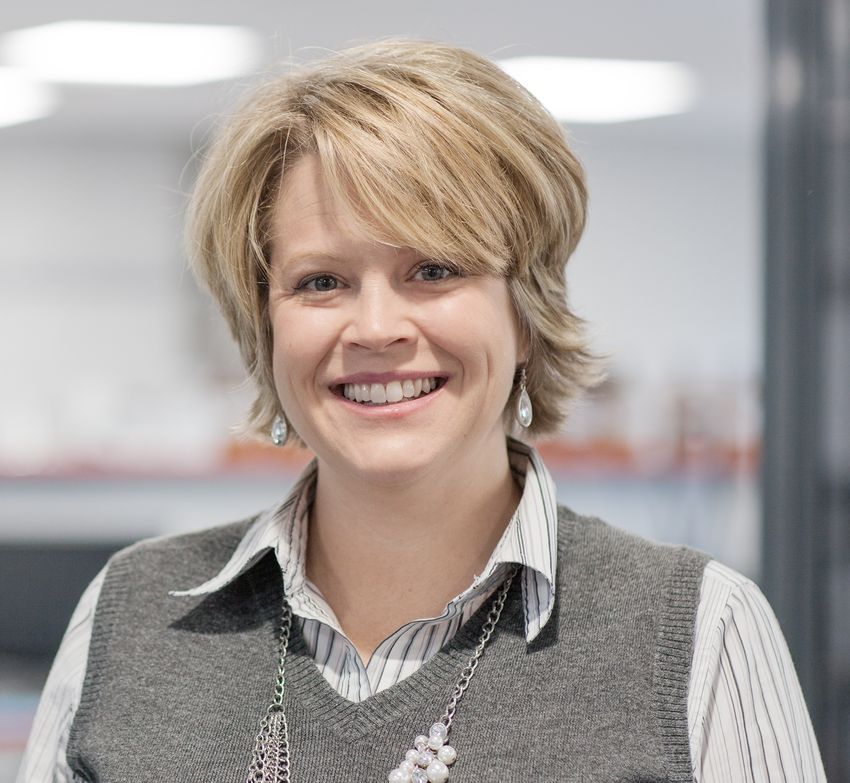Melissa Fauth, CEO of Fritsch Milling & Sizing, Inc., the U.S. subsidiary of the German family-owned company, explains how validated milling delivers reproducible particle size, accuracy, and audit-ready results. Since opening the office in North Carolina’s Research Triangle in 2014, she has overseen its growth as a resource for scientists working with solid sample preparation and particle sizing. Her team supports labs across industries, from pharmaceuticals to aerospace, with tailored milling solutions.
Q: Why is sample preparation considered the foundation of accurate analytical results and why does it matter so much?
A: Inconsistent preparation risks false positives, failed batches, wasted time, and loss of revenue. Most errors occur before the instrument is even loaded with a sample. What you feed the instrument has a significant impact on the results that follow. As part of an SOP, sample preparation prior to instrumental analysis is a critical step that is often overlooked or not identified as important to the process.
However, variability at this stage undermines everything downstream. To ensure reliable data, we need reproducibility, representative samples, and analyte integrity. But few scientists ever receive formal training in sample prep, so they do the best with what they have on hand. It isn’t negligence, it’s simply that people don’t know these solutions exist.

Melissa Fauth
Q: What misconceptions do labs have about sample prep, and what do you actually see in practice?
A: Talk to analytical instrument manufacturers and you’ll hear the same message: solid samples must be reduced before analysis. Whether the goal is to create a powder for a tablet, load a crucible for firing, or dissolve a solid into solution, the requirement is universal.
Yet our biggest competitor isn’t another brand—it’s improvised tools. We walk into top labs and see baggies and hammers, coffee grinders, or bullet blenders pressed into service for quality checks. I’ve seen PhD scientists grinding difficult materials by hand, in shifts, for days at a time before downstream processing can begin. We have automated mortar grinders that solve this in minutes, but awareness is so low that these options are often not discovered.
The gap is striking because many labs invest hundreds of thousands of dollars in instruments capable of measuring to five decimal places. If the starting material is prepared with improvised tools, that precision may not be realized. Once managers see that connection, they stop viewing mills as a luxury and start recognizing them as a safeguard.
Q: What risks arise from using the ‘wrong’ tools, like hand grinders, blenders, or non-professional equipment for sample prep?
A: With batch grinding on kitchen-style appliances, friction and excess heat can damage a sample’s physical properties and alter the chemical profile through degradation or volatilization. Improvised methods bring other problems too: contamination, unsafe dust, incomplete recovery, even the total loss of material that took weeks to collect. And because the process stops when someone decides it looks ‘right,’ the outcome depends on personal judgment. Two operators can prepare the same sample and get very different results.
There are also the human risks. Unguarded blades and blunt impact cause acute injuries. Repetitive grinding leads to strain in wrists and shoulders. EH&S officers see the pattern—recordable incidents that take people out of the lab, reset the board on days worked without injury, and drain productivity. In some cases, it even brings liability.
Most of the time, labs find themselves looking for a fix after something has gone wrong: an accident, an audit, or a costly delay. The better path is to start the conversation earlier. Awareness and education give teams a way to eliminate hazards before they happen and protect both the science and the people behind it.
Q: How does equipment choice directly impact reproducibility, reliability, and quality of the lab’s results?
A: Sample prep may seem routine, but the choice of equipment directly impacts every downstream result. One repeated challenge we hear about is inconsistency from lab to lab. Today’s analytical instruments are extremely sensitive. So why do results still vary?
It isn’t one big mistake—it’s the accumulation of many small variances. Certified reference materials and ISO/IEC 17025 standards rely on consistent prep. Professional mills make it possible to create SOPs that can be validated, which eliminates operator bias and technique drift. That’s how reproducibility is achieved and audits are passed.
And while improvised tools may look inexpensive at first, they rarely save money. A false positive or failed batch can hold up millions of dollars in raw material. A recall or disposal multiplies the loss. Purpose-built mills may carry a higher upfront price, but they prevent waste, protect staff, and deliver reproducibility that pays for itself many times over.
Q: How can better sample prep improve efficiency, reduce waste, and strengthen business outcomes?
A: Better prep shows its value on the business side. Strong systems cut variation and standardize output, which reduces delays and rework. Precision mills control particle size, homogenize material, and manage temperature so every sample stays representative.
They also protect the instruments that follow. Poorly prepared material can clog lines and cause abrasion that shortens component life, leading to premature failure. Preventing that damage keeps performance steady and lowers operating costs across the lab.
Q: Given that solid sample prep is rarely taught in school, how can labs raise their standards in practice?
A: That’s a very common challenge. Sample prep is often learned by word of mouth or habit rather than best practice. The solution is to formalize training with SOPs, validated methods, and, where possible, easy-to-program controls that reduce operator variability.
At Fritsch, we partner with labs to support that process. From proof-of-concept trials and method development resources, to training sessions online or in your facility, we focus on your exact needs. Our role is not only to provide the most ideal equipment but also to help labs modernize and standardize their preparation practices so they can achieve their goals and continuous improvement objectives.
It helps to start with the material itself. Is it hard, brittle, ductile, oily, fibrous, or moist? Each property requires a different approach. Fritsch’s portfolio of crushers, disk mills, planetary mills, rotor, cutting, and knife mills—along with cooling options—lets labs match each sample to the instrument best suited to it. Reproducibility then becomes built in, independent of the operator. That’s the benefit that unlocks all others.
Q: How do modular design and long-term support change the value equation for labs?
A: Many labs are surprised by how adaptable our systems are. With more than 3,000 interchangeable parts, a single mill can be configured to handle a wide range of materials. As needs evolve, you can update components rather than replace the instrument.
That flexibility extends asset life and reduces waste. We still support instruments purchased decades ago—including one from 1974 that’s still in service. For lab managers, that means stability: one investment that adapts as materials, methods, and compliance demands change.
This isn’t a one-time transaction. It’s a long-term relationship that carries through the life of the instrument and keeps labs productive and compliant well beyond the initial purchase.
Q: Where do you see the biggest opportunities for labs to strengthen their prep practices in the years ahead?
A: I think the biggest opportunity is awareness. Many labs still don’t recognize how much variability originates before the instrument. As new regulations emerge—whether on contaminants, pharmaceuticals, or environmental safety—prep will only grow more critical.
Labs that invest now in validated, reproducible prep will be ahead of the curve. They’ll spend less time troubleshooting, less money on reruns, and less effort on compliance. That frees them to focus on what matters most: advancing their science and supporting their organization’s goals.




